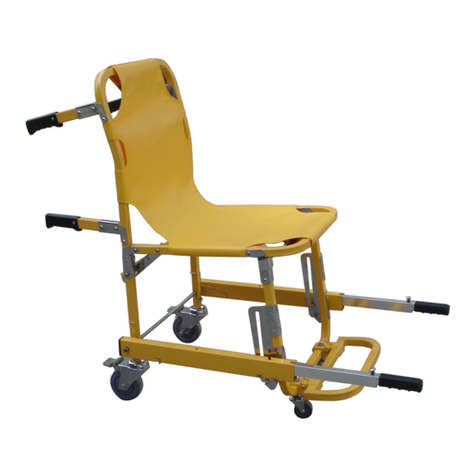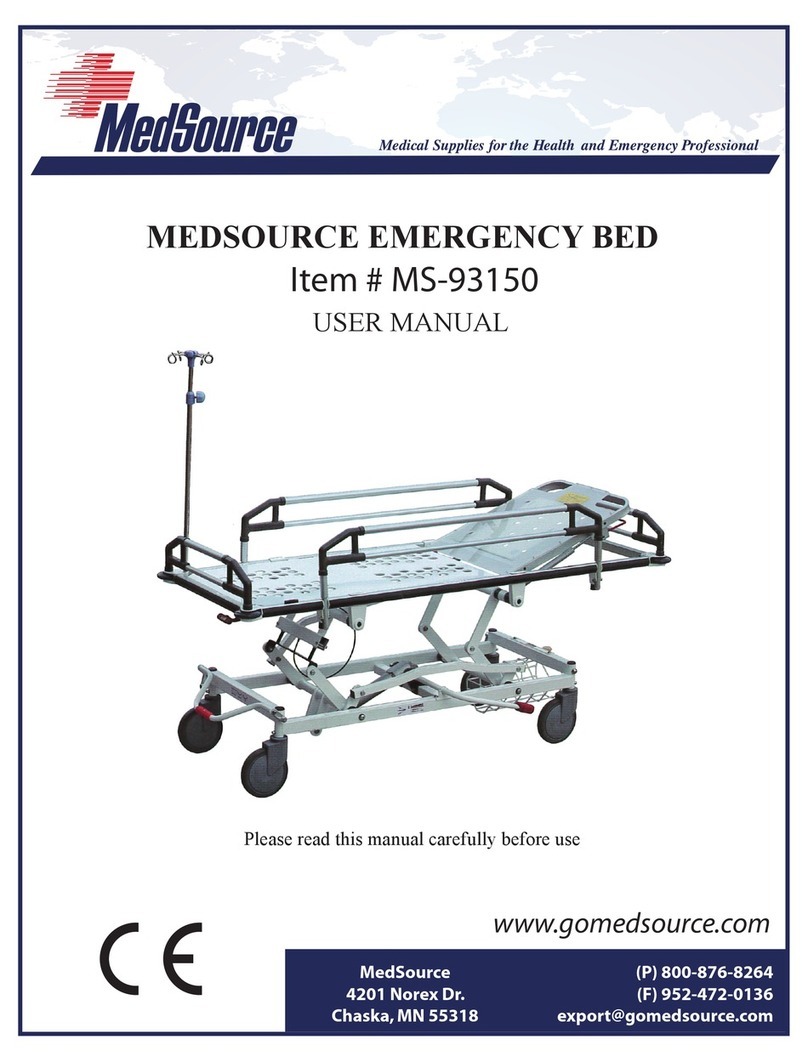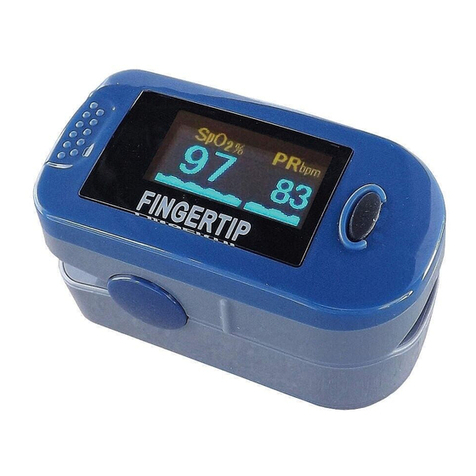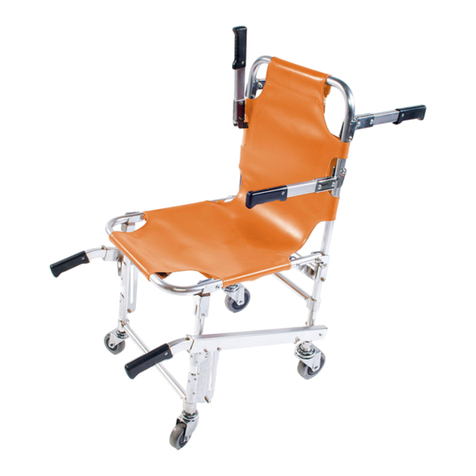MedSource MS-74011 User manual

Copyright
Our company owns all rights of this unpublished work and intends to maintain it as a
confidential work. We may also seek to maintain this work as an unpublished copyright. This
publication is to be used solely for the purpose of reference or operation of our device. No
part of this work can be disseminated for other purposes.
In the event of inadvertent or deliberate publication, we intend to enforce its rights to this work
under copyright laws as a published work. Those having access to this work may not copy,
use, or disclose the information in this work unless expressly authorized by our company.
All information contained in this publication is believed to be correct. We shall not be liable for
errors contained herein nor for incidental or consequential damages in connection with the
furnishing, performance, or use of this material. The information this publication refers to is
protected by copyrights or patents and does not convey any license under the patent rights
of our company, nor the rights of others. We do not assume any liability arising out of any
infringements of patents or other rights of third parties.
Content of the manual is subject to change without prior notice.
ALL RIGHTS RESERVED
Bluetooth®and the Bluetooth®Logo are registered trademarks of Bluetooth®SIG, Inc.
Ver2.0
Issue date: January 18, 2011

Contents
CHAPTER 1 Introduction ................................................................................ 1
1.1 Brief Introduction ....................................................................................................... 1
1.2 Safety Information ..................................................................................................... 1
1.3 Electromagnetism Interference .................................................................................. 3
CHAPTER 2 General Description ................................................................. 4
2.1 Appearance ............................................................................................................... 4
2.2 Explanation of Symbols ............................................................................................... 6
2.3 Power Supply .............................................................................................................. 7
2.4 Product Features ....................................................................................................... 8
CHAPTER 3 SpO2Probe Installation ........................................................... 8
CHAPTER 4 ID, Date and Time Setting ........................................................ 9
4.1 Date & Time Settings .................................................................................................. 9
4.2 User ID Setting ............................................................................................................ 9
CHAPTER 5 Take a Measurement ................................................................. 10
CHAPTER 6 Other Settings .......................................................................... 12
6.1 Alarm Setting ........................................................................................... 12
6.2 Data Management .................................................................................. 14
6.3 System Setting ........................................................................................ 16
CHAPTER 7 Maintain and Repair ................................................................ 18
7.1 Maintenance ............................................................................................ 18
7.2 Safety Checks ......................................................................................... 18
7.3 Calibration and Verification ......................................................................19
7.4 Trouble Shooting ..................................................................................... 20
7.5 Warranty and Repair ............................................................................... 20
7.6 Storage and Transportation ..................................................................... 22
APPENDIX A Specifications .......................................................................... 23
APPENDIX B Statement of Manufacturer .................................................... 25

MS-74011
MS-74011

- 2 -
● When connecting this device to other peripherals, make sure that you are qualified to
operate this device. Any peripheral must be certified according to the protocol of IEC 950
and IEC 601-1-1. Any input/output device should follow the protocol of IEC 601-1-1.
● Considering the probe is a sensitive device, please strictly follow the probe application
instructions.
● The malfunction of the probe may cause inaccurate data which serves as a foundation to
treat patients, so make sure to pay more attention to the probe and inspect it usually.
● The worn-out data cables may cause inaccurate data which is used as a reference to treat
patients, so please pay attention to the data cable and check it frequently.
● Do not touch the AC adapter with wet hands. Otherwise, you may suffer electric shock.
● The disposable accessories should not be cycled.
● Clean the probe with an H2O solution and a neutral detergent. Do not submerge the probe.
Do not use the probe in autoclave (sterilizer).
● This device is intended for use by persons trained in professional health care. The operator
must be thoroughly familiar with the information in this manual before using the device.
● Before cleaning or disinfecting the probe, unplug it from the pulse oximeter to prevent
probe or pulse oximeter from being damaged, and to protect user under safety situation.
● To avoid an electrical hazard, never immerse the unit in any liquid or attempt to clean
it with liquid cleaning agents. Always disconnect the device from the AC adapter before
performing cleaning of maintenance.
● Alarm must be set up according to different situations of individual patient. Make sure that
chime sound can be activated when alarm function begins to work.
Cautions:
Notes:
● Application of this device may influence the measuring accuracy in the background of
electromagnetic areas such as electro-surgery environment.
● SpO2measurements may be adversely affected in the presence of high ambient light.
Shield the probe area (with a surgical towel, for example) if necessary.
● Dyes introduced into the bloodstream, such as methylene blue, indocyanine green, indigo
carmine, and fluorescein, may adversely affect the accuracy of the SpO2reading.
● Any condition that restricts blood flow, such as use of a blood pressure cuff or extremes in
systemic vascular resistance, may cause a failure to determine accurate pulse rate and
SpO2readings.
● Remove fingernail polish or artificial fingernails before applying SpO2probes. Fingernail
polish or artificial fingernails may lead to inaccurate SpO2readings.
● Hazards arising from software errors have been minimized. Hazard analysis conforms
to meet ISO14971: 2000 and EN60601-1-4: 1996. Significant levels of dysfunctional
hemoglogins, such as carboxyhemoglogin or methhemoglobin, will spawn an affection of
the accuracy of the SpO2measurement.
● Optical cross-talk can occur when two or more probes are located in adjoining area. It can
be eliminated by covering each site with opaque material. Optical cross-talk may adversely
affect the accuracy of the SpO2readings.
PULSE OXIMETER

- 3 -
● Obstructions or dirt on the probe’s red light or detector may cause a probe failure. Make
sure there are no obstructions and the probe is clean.
● The AC adapter and accessories used with the device should be complied with the
requirement of IEC60601-1.
● For routine equipment maintenance, please refer to the service procedures at the
associated section as indicated in the manual.
● As to the other concerns for attention, please carefully look through the specific chapter in
this instruction.
● Federal law restricts this device to sale by or on the order of a physician.
This pulse oximeter is designed and tested in compliance with the EMC standard, complying
with the international standard for the EMC of the electronic medical device - IEC 60601-1-2.
However, because of the proliferation of radio frequency transmitting equipment and
other sources of electrical noise in the health-care and home environments (e.g. cellular
phones, mobile two-way radios, electrical appliances), it is possible that high levels of
such interference due to close proximity or strength of a source, may result in disruption of
performance of this device.
This apparatus complies with the IEC 60601-1-2 international standard. The requirements of
this international standard are: CISPR11, GROP1, and CLASS B.
1.3 Electromagnetism Interference
INSTRUCTION MANUAL
Table of contents
Other MedSource Medical Equipment manuals
Popular Medical Equipment manuals by other brands

Getinge
Getinge Arjohuntleigh Nimbus 3 Professional Instructions for use

Mettler Electronics
Mettler Electronics Sonicator 730 Maintenance manual

Pressalit Care
Pressalit Care R1100 Mounting instruction

Denas MS
Denas MS DENAS-T operating manual

bort medical
bort medical ActiveColor quick guide

AccuVein
AccuVein AV400 user manual















